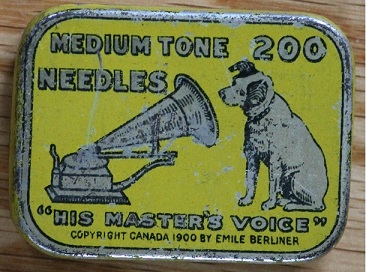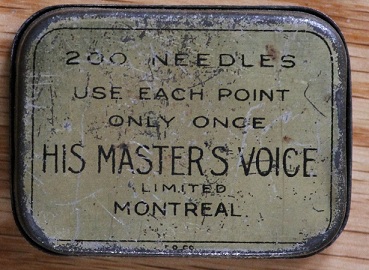E. Berliner began manufacturing the Gram-o-phone in Canada in 1899, using a cabinet made at his factory in Montreal, Quebec and a motor, turntable and other mechanical parts imported from Eldridge Johnson in Camden, New Jersey. Berliner advertised extensively in Canadian newspapers.
Manitoba Semi-Weekly Free Press, November 5, 1900, p. 2: "All genuine Berliner Gram-o-phones sold in Canada are made in Montreal and are the only talking machines made in Canada."
By 1902, the Berliner Gram-o-phone was made wholly in Canada.
Montreal Star, December 18, 1902, p. 2: "To go into anything like a detailed description of the building of the Gram-o-phone is a task not to be attempted, for simple though the instrument is, and free from anything like the complications which might be expected, it is still a big task to describe its manufacture. Every particle of the many parts of the machine is manufactured in Montreal and even the rubber disc in which the sound waves are found are turned out by the hundred by young Montrealers who have been trained in the work."
Edward Moogk's Roll Back The Years (National Library of Canada, 1975) on p.19:
"Emile Berliner patented his gramophone in Canada for two
reasons: he was anxious to establish a base for the
protection of his patents, the rights to which he had
surrendered in all other countries, and he wanted to
prepare a selection of records for the French-Canadian
market."
From Mark Caruana's The Berliner Gramophone: an Illustrated History (Domenic
DiBernardo, 2005):
-after a series of court battles Berliner, the inventor of the disc record gramophone, struck a deal with Eldridge Johnson to take ownership of the disc machine patents
-on October 3, 1901, The Victor Talking Machine Company was founded
-Berliner held shares in Victor and a number of his machines would continue to be sold in the United States but they were now products of Victor, controlled by Johnson
Contemporary death notice with biographical details:
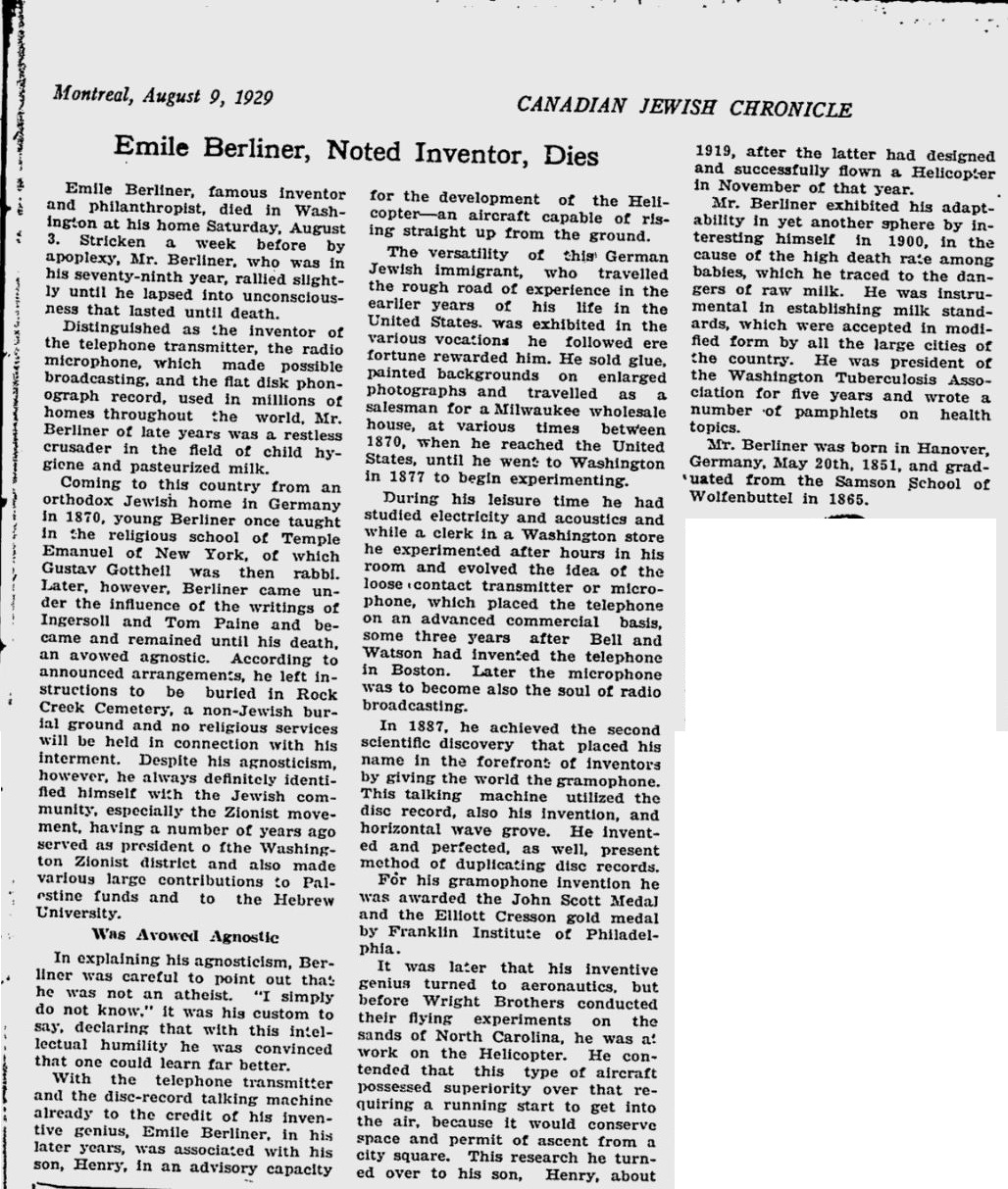
Notice to Canadian competitors that the patents will be defended. Toronto Daily Star Jan. 11, 1908 pg. 11.
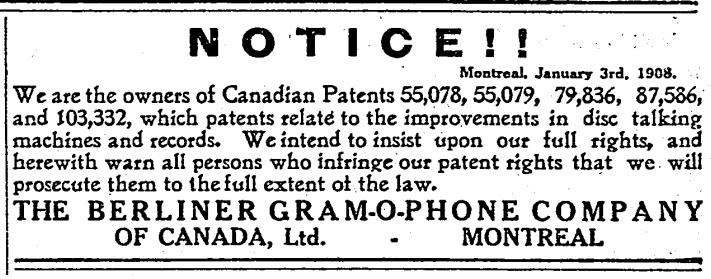
Drawing from the earliest of the Canadian patents listed above that currently have drawings available through the Canadian Intellectual Property Office (last patent listed above):

Example of patent case by Berliner, Toronto Daily Star Feb. 24 1910, pg. 1:

Advert from Toronto Daily Star, Oct. 17 1903 p. 19.
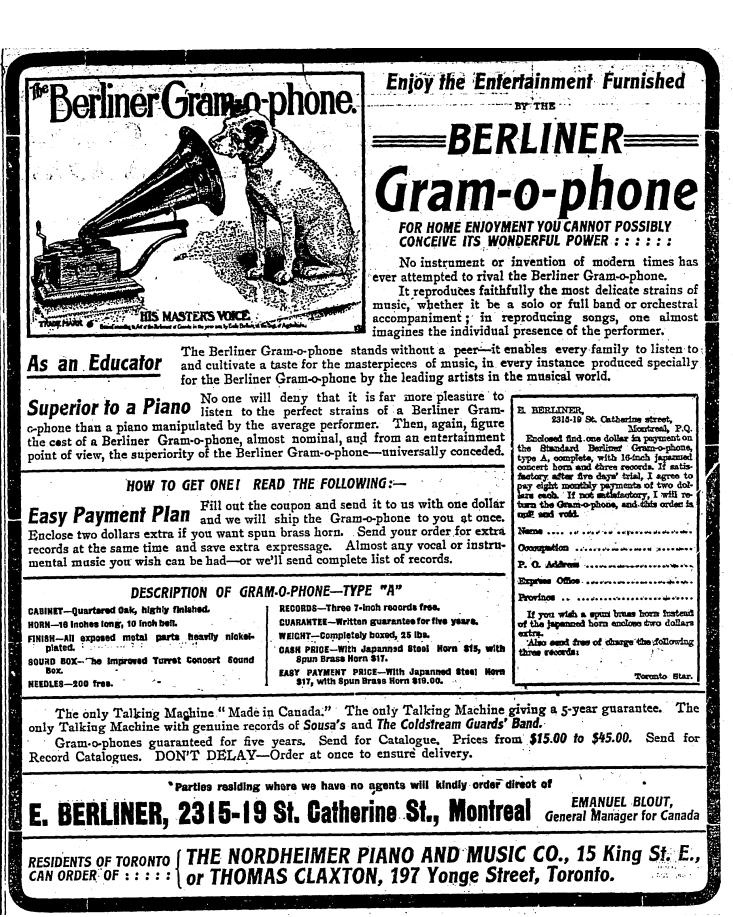
Advert from Montreal Gazette, Nov. 2, 1908 p. 5.

Toronto World, Oct. 30, 1915 p. 6. Berliner wins libel suit accusing him of 'strong arm' sales tactics.

The below pictures (unless otherwise stated) and information are courtesy of The Berliner Gramophone: an Illustrated History with permission of the author, Mark Caruana, and publisher, Domenic DiBernardo.
The following pictures are from the Domenic DiBernardo Collection and are all copyright. He has a website at http://mrgramophone.com/
Model 'A'
-introduced in 1900 at a price of $15
-early versions--serial numbers up to the low 2600s--have a coloured decal with serial number stamped below
-later versions have the emblematic stamped aluminum plate
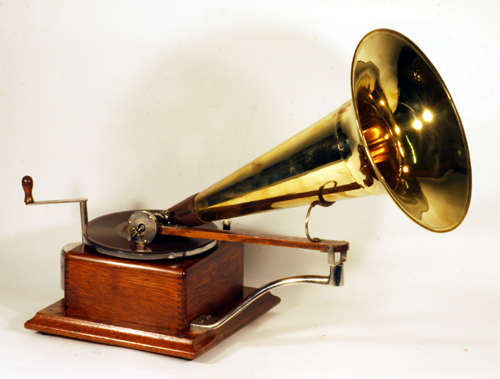
Plate from KW's later model 'A'

Model 'B'
-early version with nickel trim under turn table
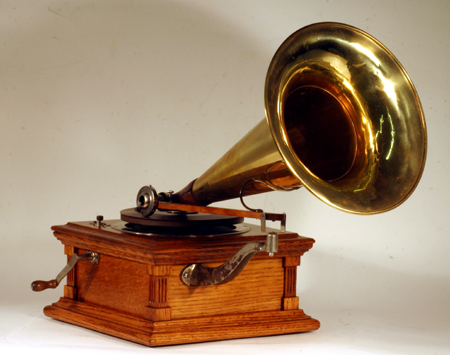
Model 'C'
-largest machine marketed by Berliner in Canada
-aptly name 'Grand' with oak version selling for a comparatively-high $45
-came in mahogany
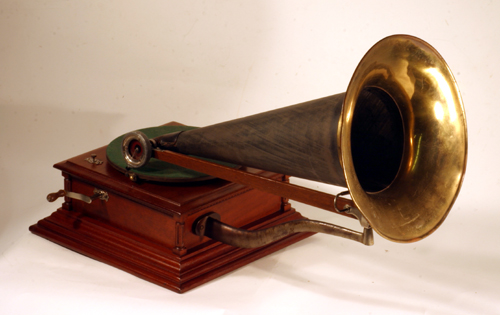
-or oak

Model 'D'
-similar to an 'A' with the cabinet enlarged to hold the motor

Model 'E'
-early version predictably called the pyramid

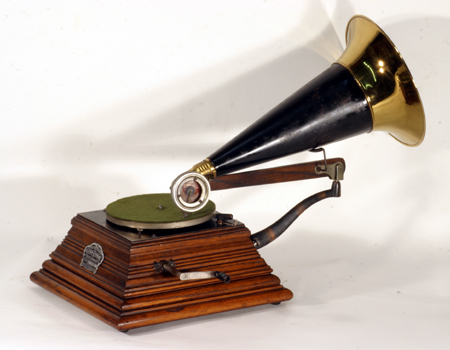
-late version sold as the 'Bijou' for $22
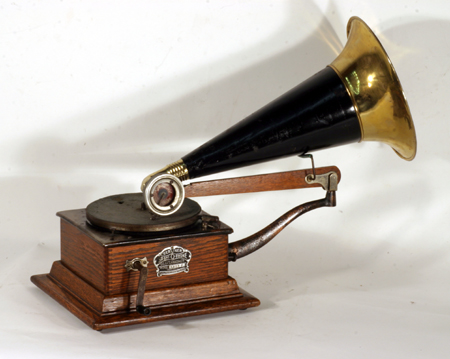
Scans from a 1902 Berliner catalog showing the 'A', 'B', 'C' and 'E' machines (plus available parts etc.) can be found here.
Model 'F'
-similar to an 'E' but with 8-inch turn table and no tone arm
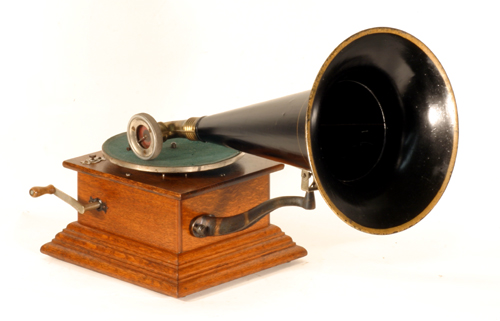
Model 'G'
-came in ornate oak

-or a plainer mahogany
 <
<Model 'GT'
-similar to a 'G' with the 'T' likely indicating rear-mounted tapering tone arm similar to Victor
-also has id plate resembling that of Victor's 'Nipper' plate

Model 'H'
-late addition when rear-mounts were available with holes pre-drilled to allow rear-mount upgrade
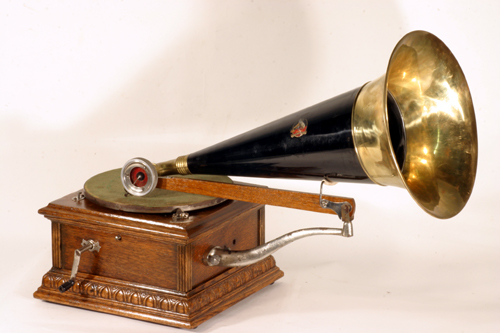
Model 'J'
-two versions
-one with 10-inch turn table, rear mount and plain case
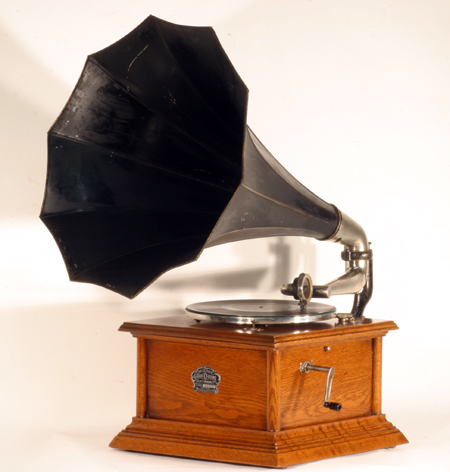
-or 12-inch turn table and ornate case, rear mount

-or front mount

Model 'K'
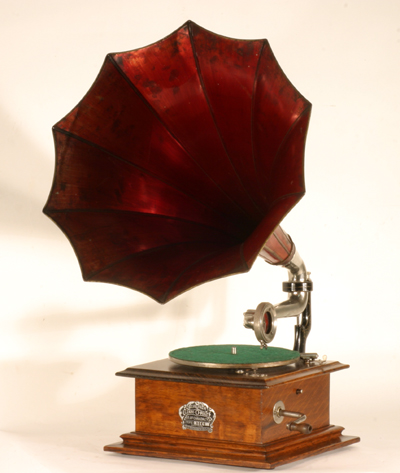
Model 'LT'
-essentially a rear-mounted 'F'
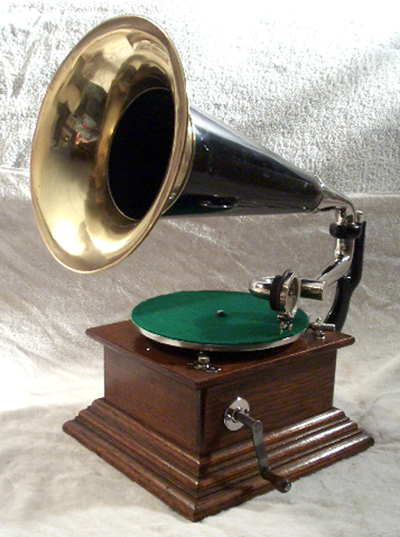
Model 'P'
-similar to Victor 'P'

Berliner record, collection KW:

For more information regarding Berliner records, please see the Canadian Antique Phonograph Society article by Steven C. Barr at: http://www.capsnews.org/barrber.htm
Later machine labelled as 'Victor' from Berliner's Montreal facilities. VV III does not exist in American Victor lineup (picture from the front shows a recording attachment--pictures by Cheryl Wright):



Needle tins and trays:
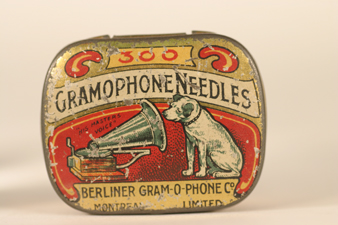
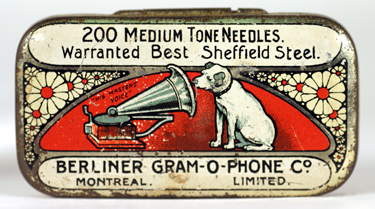
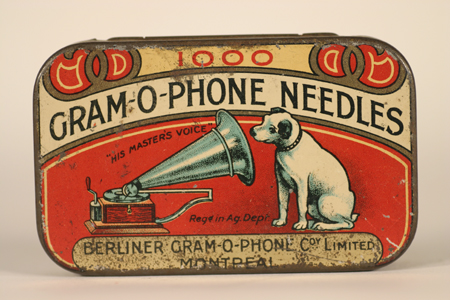

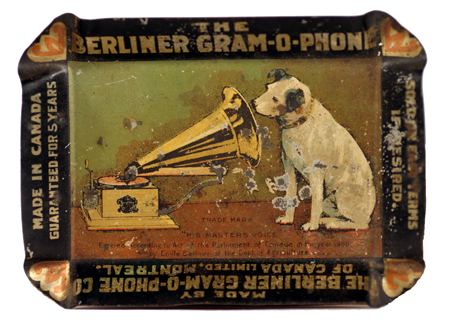

Below photo by Cheryl Wright:
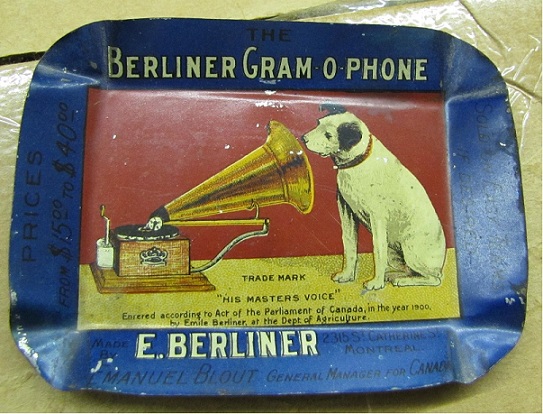
KW later paper needle pack:
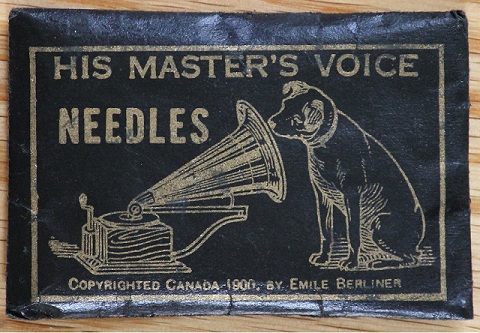
KW example of later common Canadian needle tin:
